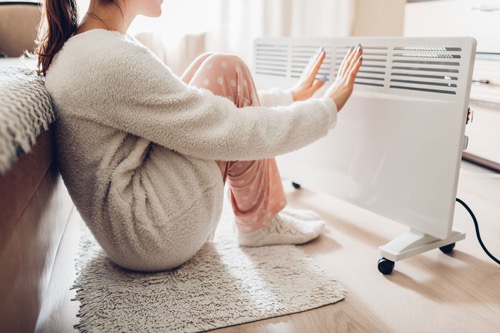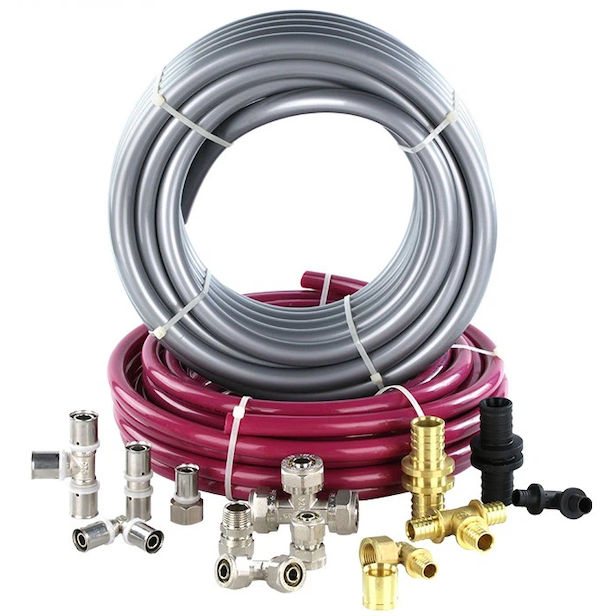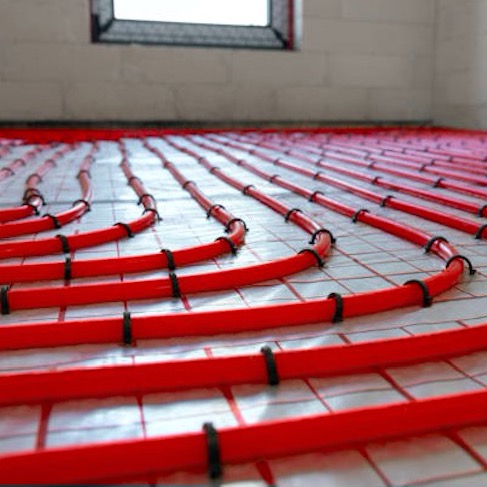Table of Contents
ToggleIntroduction
What are the consequences of frozen PEX pipes?
Frozen pipes in any plumbing system, including those made of PEX (cross-linked polyethylene), can lead to serious consequences. Here are some of the main drawbacks associated with frozen PEX pipes:

pex pipe frozen
Pipe Bursting: This is the most damaging consequence of frozen pipes. When water freezes, it expands, increasing the internal pressure within the pipe. If the pressure becomes too great, it can cause the pipe to burst, leading to significant water damage.
Water Damage: A burst pipe can release a substantial amount of water. This can lead to flooding, which can damage furniture, appliances and personal belongings, and lead to structural damage to your home or property. The longer the water flows uncontrolled, the more severe the damage.
Mold Growth: Post water damage, there's a high risk of mold growth. Damp environments are a breeding ground for various types of fungi, which can be harmful to health and difficult to eradicate.
Disrupted Water Supply: Frozen pipes prevent the normal flow of water. In severe cases, you might have limited or no access to water.
Expensive Repairs: Repairing the damage caused by frozen and burst pipes can be expensive. This includes pipe replacement, fixing water damage, and potentially dealing with mold or structural damage.
To avoid these consequences, it's always wise to take precautions to prevent your PEX pipes from freezing, especially in colder months.
How to prevent the pex pipes from freezing
Protecting your PEX pipes from freezing is essential, especially in colder climates. If the pipes freeze, this can lead to them bursting, which is a costly and extensive repair. Here are six ways to prevent your PEX pipes from freezing:
Properly Insulate the Pipes:

pex tube insulation
The easiest and most effective way to prevent PEX pipes from freezing is to insulate them. Foam pipe insulation can be easily found at any home improvement store and is easy to install.
Install Heat Tape:
For added protection, consider installing heat tape on your PEX pipes. Heat tape, when plugged in, emits a heat that can keep pipes warm and prevent freezing.
Seal Off Drafts:
Check your home for any drafts that could expose your pipes to freezing temperatures. Common sources of drafts can include windows, doors, and gaps in your home's exterior.
Let Faucets Drip:
If the temperature drops below freezing, allowing your faucets to slowly drip can help prevent pipes from freezing. The movement helps prevent standing water in the pipes from freezing.
Drain Water Lines:
If you plan on leaving your home for a prolonged period during the winter, you could consider draining your water lines. By doing so, you're ensuring no water can freeze within the pipes.
Keep the Heat On:

pex pipe heating
If you're away from home, don't switch off the heating system. Keeping your home’s heat on–even if at a low setting–can help maintain a warm enough environment to prevent pipes from freezing.
Always remember that prevention is better than cure. It is easier and less expensive to prevent your PEX pipes from freezing than dealing with the aftermath of a frozen, burst pipe.
What can we do for the frozen pex pipes?
If you discover a frozen PEX pipe, it's crucial to act quickly and carefully to mitigate any potential damage. Here are the steps you should follow:
1. Locate the Frozen Section: Before you can defrost the pipe, you need to know where it's frozen. This is usually in an unheated or uninsulated space such as an external wall or basement. The affected pipe may have frost on the outside, and no water will come out of the taps it supplies.
2. Open the Faucet: Open both the hot and cold handles of the faucet that the pipe feeds. This will help to relieve pressure in the system and will allow the water to flow out once the blockage starts to melt.
3. Apply Heat: Use a hairdryer to slowly apply heat to the section of pipe that is frozen. Start at the faucet end of the pipe and work your way back to the frozen part. Do not use an open flame as this can damage the pipe or even lead to a house fire.
4. Warm the Environment: If possible, increase the temperature in the room where the freeze has occurred. This will help to keep the pipe from refreezing once you have thawed it out.
5. Insulate the Pipes: Once the pipe is thawed, take steps to prevent it from freezing again, such as insulating the pipe or adding heat tape.
6. Contact a Professional: If you're unable to locate the frozen area, if the area is not easily accessible, or if you cannot thaw the pipe, call a licensed plumber.
Remember to act safely. Do not use any electrical appliances in areas of standing water and never attempt to thaw a pipe that has already burst.















